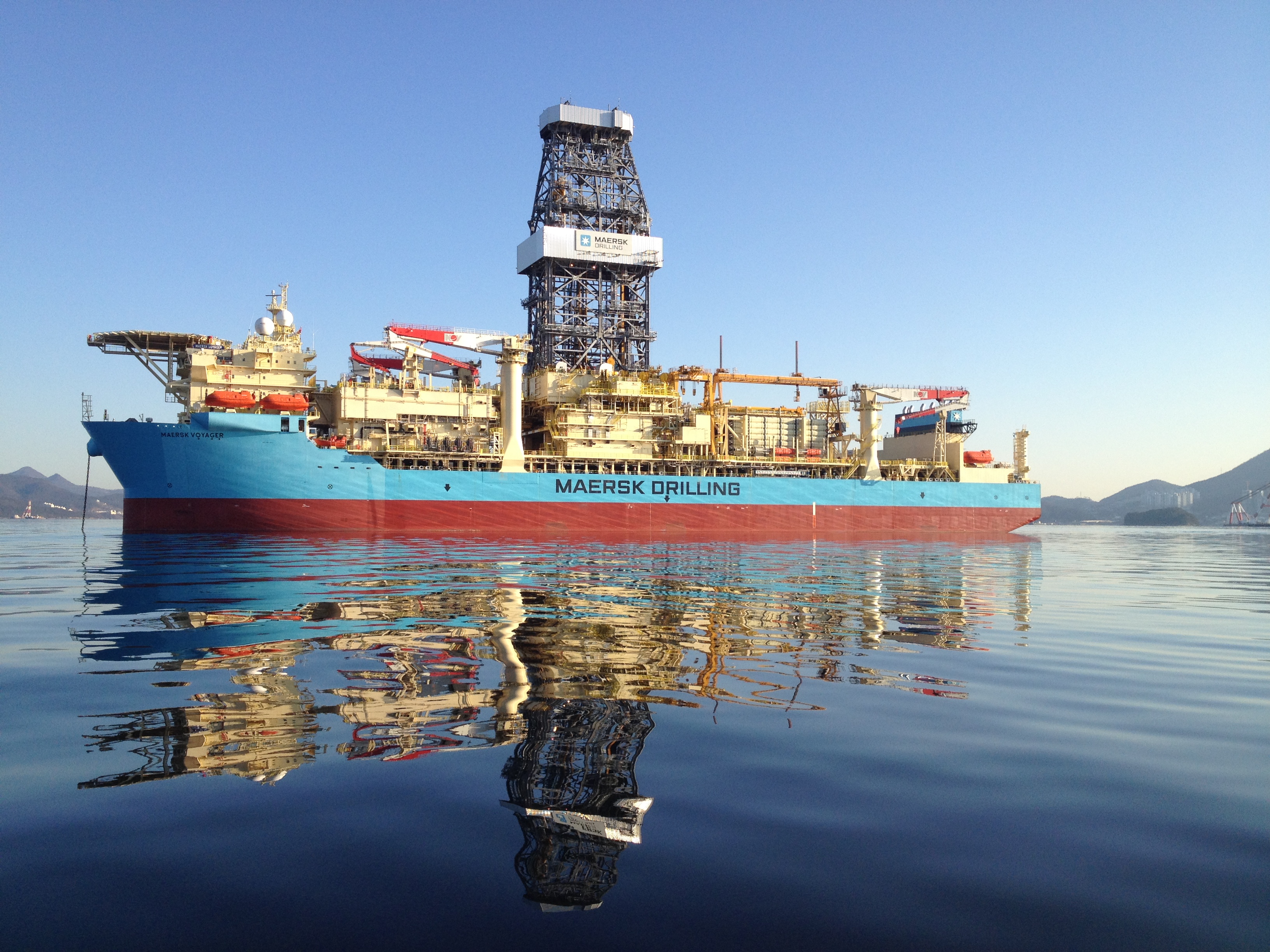
The drillship has been and remains a versatile vessel design that has proved itself an integral part of the E&P industry’s adventure into deeper waters since Global Marine’s converted CUSS 1 first entered the scene in the late 1950s.
Since then, the technologies and sheer scale of these vessels have evolved dramatically to the point where one of the latest sixth-generation ultradeepwater units, to have entered the market—Maersk Drilling’s Maersk Voyager—is a very different creature to its distant forebear.
Although still recognizable as two of a kind, Maersk’s Samsung 96K design vessel is a much more potent beast, and its dimensions and capabilities illustrate the concept’s development over the course of almost six decades. The CUSS I—a surplus navy barge named after the Continental, Union, Shell and Superior oil consortium that originally developed it with Glomar in 1956 as a technological test bed for nascent oil drilling in the Gulf of Mexico—came in at a length of 79 m (260 ft), with a width of 14 m (48 ft) and the initial ability to drill in up to 122 m (400 ft) of water. It was a truly remarkable vessel for its time, which would, of course, go on to drill the famous Project Mohole in the 1960s.
As in all areas of the offshore business, however, more than 50 years of evolution means technologies have advanced the boundaries far beyond what was originally thought possible. The Maersk Voyager, delivered to Maersk Drilling early in 2015, is nearly three times as long at 228 m (748 ft) and also nearly three times as wide at 42 m (138 ft). Able to drill in up to 3,600 m (12,000 ft) of water, it can drill wells to a total depth of 12,000 m (40,000 ft).
Maersk probably wishes the costs had not also risen accordingly, however—Glomar’s CUSS II, for example, despite being nearly twice the size of CUSS I, “only” cost about $4.5 million to build in 1962. The building of the Maersk Voyager and its three sister vessels, Maersk Viking, Maersk Venturer and Maersk Valiant (all delivered in 2014), represents the slightly higher total investment of $2.6 billion.
The Maersk Voyager is the last in the series of four ultradeep drillships in Maersk’s rig fleet and was delivered in February 2015 from the Samsung Heavy Industries shipyard in Geoje-Si, South Korea. It has been working for Italy’s Eni offshore Ghana, West Africa, since July 2015, and is planned to stay on contract until December 2018, with an option for a further year, representing expected revenue from the firm contract of $545 million.
The drillship has all the technical specifications expected of a sixth-generation dynamically positioned drillship, including dual derricks and large subsea work and storage areas. Able to stay in a fixed position in severe weather conditions with wave heights of up to 11 m (36 ft) and wind speeds of up to 26 m/sec (85 ft/sec), the drillship also is equipped with multimachine control on the automated drill floor to ensure the latest standards in modern safety levels.

Recommended Reading
Exxon Slips After Flagging Weak 4Q Earnings on Refining Squeeze
2025-01-08 - Exxon Mobil shares fell nearly 2% in early trading on Jan. 8 after the top U.S. oil producer warned of a decline in refining profits in the fourth quarter and weak returns across its operations.
Phillips 66’s NGL Focus, Midstream Acquisitions Pay Off in 2024
2025-02-04 - Phillips 66 reported record volumes for 2024 as it advances a wellhead-to-market strategy within its midstream business.
Rising Phoenix Capital Launches $20MM Mineral Fund
2025-02-05 - Rising Phoenix Capital said the La Plata Peak Income Fund focuses on acquiring producing royalty interests that provide consistent cash flow without drilling risk.
Equinor Commences First Tranche of $5B Share Buyback
2025-02-07 - Equinor began the first tranche of a share repurchase of up to $5 billion.
Q&A: Petrie Partners Co-Founder Offers the Private Equity Perspective
2025-02-19 - Applying veteran wisdom to the oil and gas finance landscape, trends for 2025 begin to emerge.
Comments
Add new comment
This conversation is moderated according to Hart Energy community rules. Please read the rules before joining the discussion. If you’re experiencing any technical problems, please contact our customer care team.




